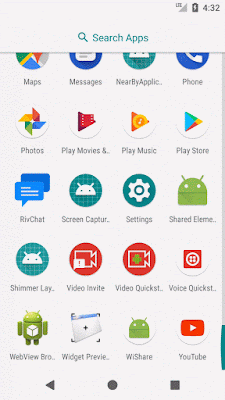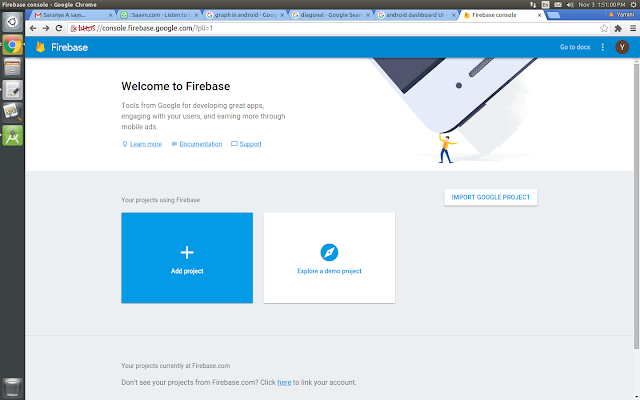Retrofit Integration in Android - Kotlin
Retrofit is a Networking library, which is faster to use and easier to develop.
Let’s see how to integrate Retrofit in Android with Kotlin.
If you'd like to integrate RxJava as well, you can check here.
Let’s see how to integrate Retrofit in Android with Kotlin.
If you'd like to integrate RxJava as well, you can check here.
1. Configure:
- Include the following in app-level build.gradle.
build.gradle
compile "com.squareup.retrofit2:retrofit:2.3.0"
compile "com.squareup.retrofit2:converter-gson:2.3.0"
- Include internet permission in Manifest file.
AndroidManifest.xml
<uses-permission android:name="android.permission.INTERNET" />
2. Preparing Helper classes:
ApiInterface.kt
interface ApiInterface {
@POST("get_users_detail") // Your url
fun getUser(@Body requestBody: RequestBody): Call<UserResponse>
}
Model classes:
Response from Retrofit will be stored in POJO classes directly.
UserResponse.kt
data class UserResponse(var httpCode: String, var user: ArrayList<User>)
User.kt
data class User(val name: String, val phone: String)
3. Code
Here, the request parameters will be sent to api in the type of RequestBody, but you can send in any type as you wish. And GsonConverterFactory will convert the response as UserResponse pojo, that we can read.
RetrofitDemo.kt
class RetrofitDemo : AppCompatActivity() {
private var list: ArrayList<User?> = ArrayList<User?>()
lateinit var adapter: RecyclerAdapter
lateinit var retrofit : Retrofit
var url : String = "xxxxxxxxxx" // Your Base Url Ex: htttp://xxexample.com/api/
lateinit var apiService : ApiInterface
override fun onCreate(savedInstanceState: Bundle?, persistentState: PersistableBundle?) {
super.onCreate(savedInstanceState, persistentState)
setContentView(R.layout.recycler)
retrofit = Retrofit.Builder()
.baseUrl(url)
.addConverterFactory(GsonConverterFactory.create())
.build()
recyclerView.layoutManager = LinearLayoutManager(this, LinearLayout.VERTICAL, false)
adapter = RecyclerAdapter(this, list);
recyclerView.adapter = adapter
callApi()
}
private fun callApi() {
val json = JSONObject()
json.put("id","20")
val requestBody : RequestBody = RequestBody.create(MediaType.parse("application/json; charset=utf-8"), json.toString())
apiService = retrofit.create(ApiInterface::class.java)
val call : Call<UserResponse> = apiService.getUser(requestBody)
call.enqueue(object : Callback<UserResponse> {
override fun onFailure(call: Call<UserResponse>?, t: Throwable?) {
Toast.makeText(this@RetrofitDemo, t!!.message,Toast.LENGTH_SHORT).show()
}
override fun onResponse(call: Call<UserResponse>?, response: Response<UserResponse>?) {
val data : UserResponse? = response!!.body()
if(data!!.httpCode.equals("200")) {
list.addAll(data.user);
adapter.notifyDataSetChanged()
}else{
Toast.makeText(this@RetrofitDemo, getString(R.string.something_wrong),Toast.LENGTH_SHORT).show()
}
}
});
}
class RecyclerAdapter(val context: Context, val data: ArrayList<User?>) : RecyclerView.Adapter<RecyclerAdapter.ViewHolder>() {
override fun onBindViewHolder(holder: ViewHolder?, position: Int) {
if (holder != null)
holder.bindItems(data.get(position))
}
override fun onCreateViewHolder(parent: ViewGroup?, viewType: Int): ViewHolder {
val v = LayoutInflater.from(context).inflate(R.layout.list_item, parent, false)
return ViewHolder(v)
}
override fun getItemCount(): Int {
return data.size
}
class ViewHolder(itemView: View?) : RecyclerView.ViewHolder(itemView) {
fun bindItems(map: User?) {
itemView.itemid.text = map!!.name
itemView.name.text = map.phone
}
}
}
}
4. Run Application:
Finally run the application.









Great Thanks for this article !
ReplyDelete